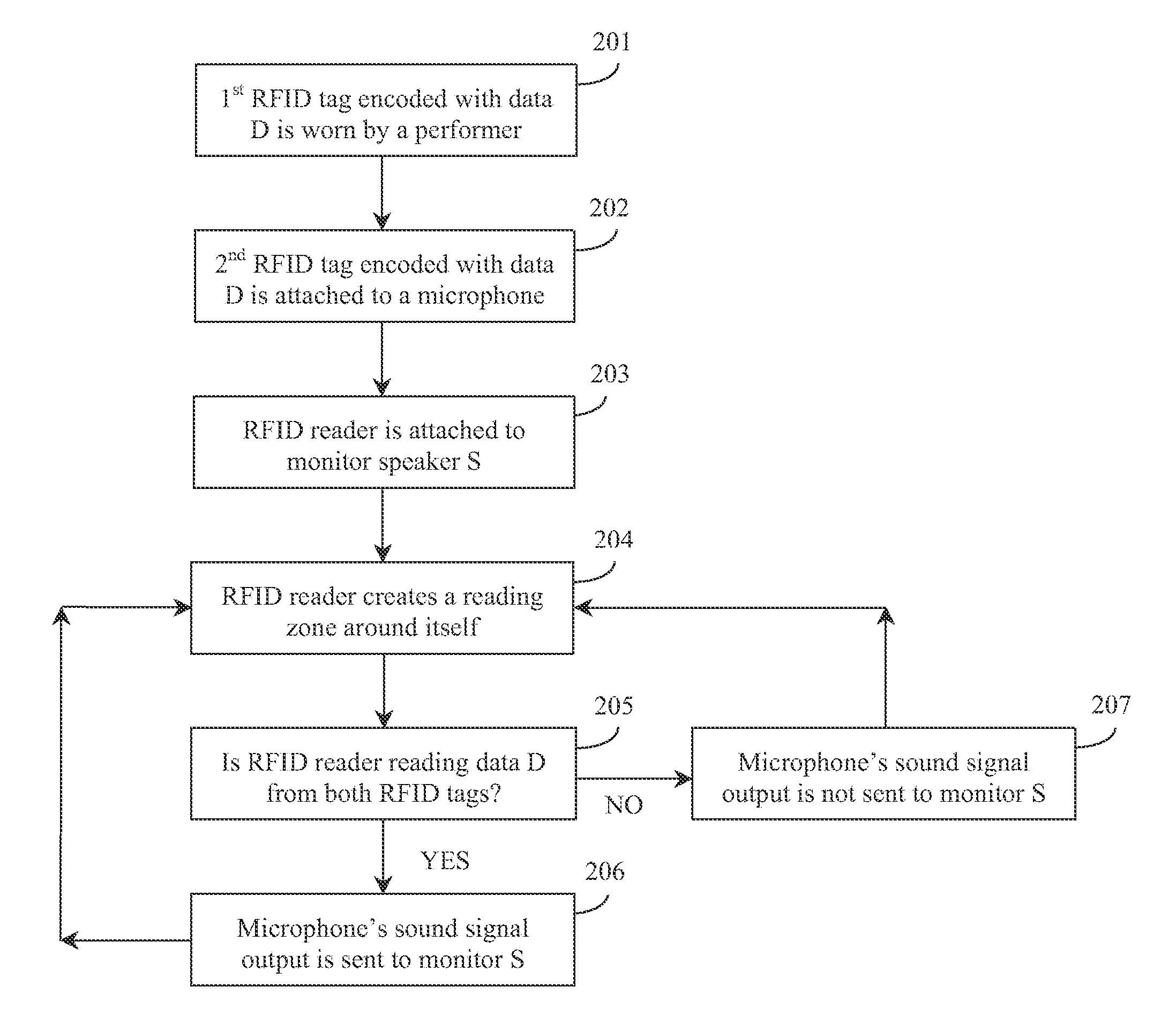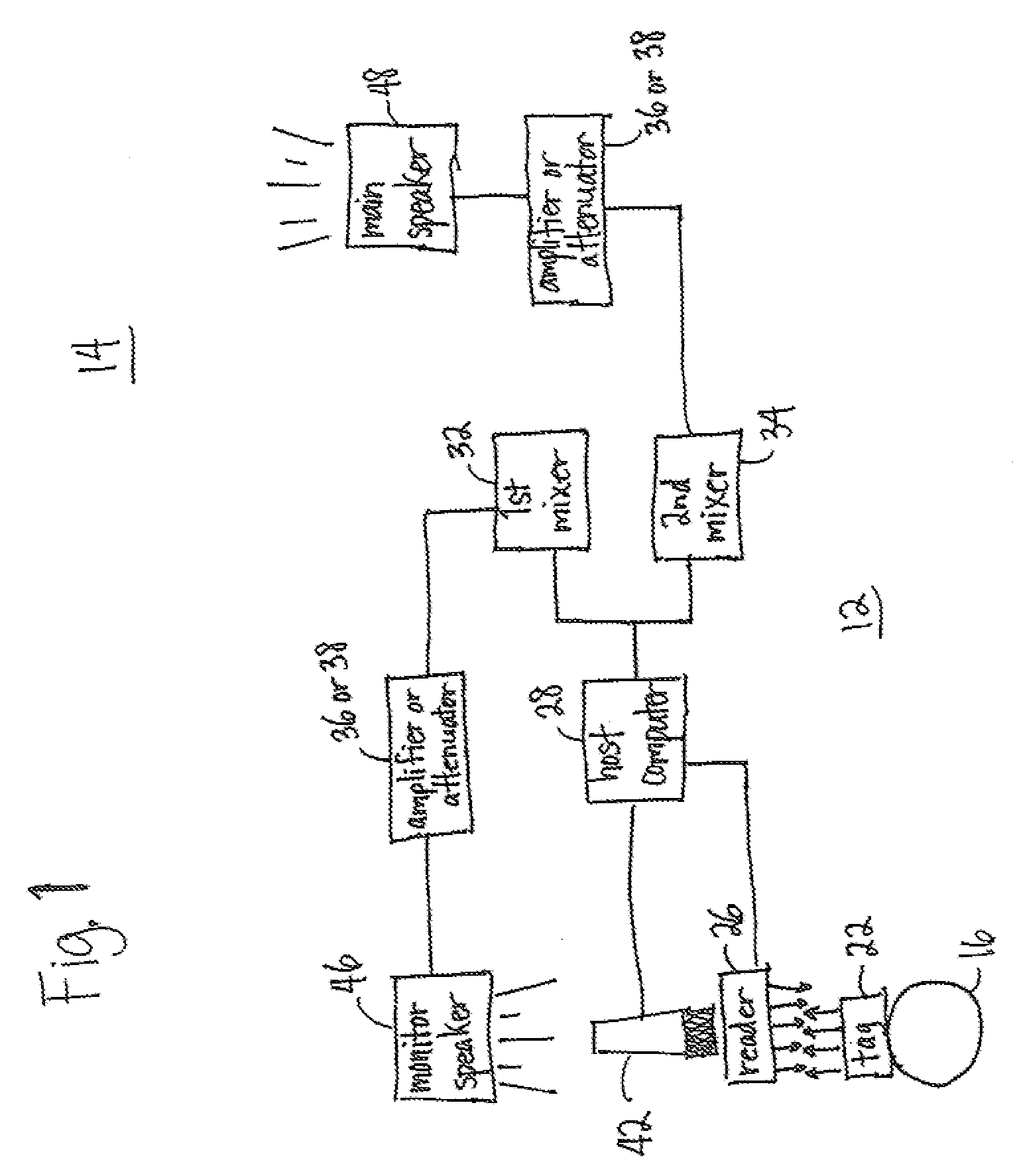Method for controlling entertainment equipment based on performer position
a technology of entertainment equipment and position, applied in the direction of gain control, subscriber station connection selecting arrangement, indirect connection, etc., can solve the problem of increasing the cost of potential for human error in the live sound production process, vocalists singing out of tune with the instrumental sound, and comb filtering effect which may be undesirabl
- Summary
- Abstract
- Description
- Claims
- Application Information
AI Technical Summary
Benefits of technology
Problems solved by technology
Method used
Image
Examples
Embodiment Construction
[0024]This disclosure, as defined by the claims that follow and as presented by way of example in the accompanying drawings, relates to an RFID-based entertainment equipment control system and method for it use. The present inventors anticipate that this system will be used in controlling the operability or output of a variety of transducers, power adjusters and other outputting devices, including loudspeakers, amplifiers, attenuators, light emitters, pyrotechnic launchers and conceivably other apparatuses commonly used in live entertainment productions. So, although the following discussion will primarily focus on microphones (or their audio signal output) as being the particular devices controlled according to location or distance determinations made with RFID technology, one should remain aware that the functionality and / or output of other types of entertainment equipment could be controlled according to similar logic and in similar fashion.
[0025]The present entertainment control...
PUM
 Login to View More
Login to View More Abstract
Description
Claims
Application Information
 Login to View More
Login to View More - R&D
- Intellectual Property
- Life Sciences
- Materials
- Tech Scout
- Unparalleled Data Quality
- Higher Quality Content
- 60% Fewer Hallucinations
Browse by: Latest US Patents, China's latest patents, Technical Efficacy Thesaurus, Application Domain, Technology Topic, Popular Technical Reports.
© 2025 PatSnap. All rights reserved.Legal|Privacy policy|Modern Slavery Act Transparency Statement|Sitemap|About US| Contact US: help@patsnap.com



